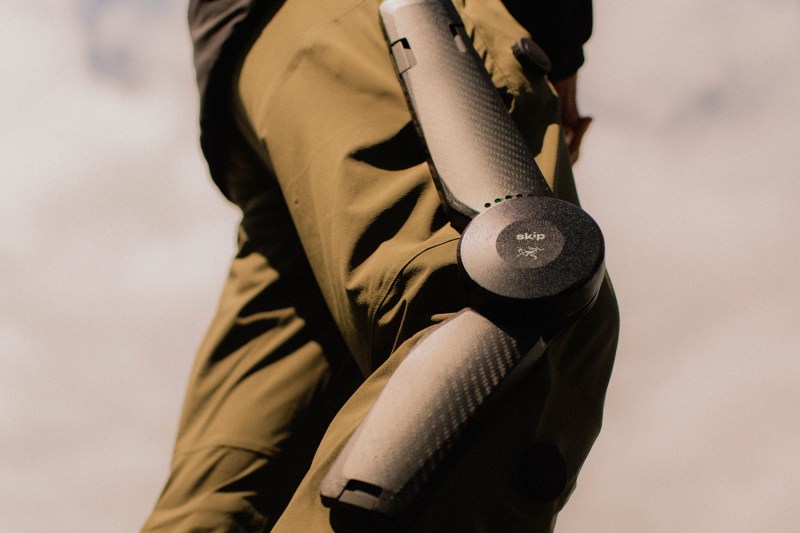For all the news that comes out of the outdoor gear and apparel industry every year, few things are truly new and revolutionary. Backpacks, trekking poles, skis, even the best bike racks—they all tout incremental changes year over year, but it’s rare to see anything radically different. So when a heavyweight brand like Arc’teryx announces that it’s soft-launching a pair of motorized hiking pants, it’s time to sit up and take notice.
Everything we know about Arc’teryx’s Mo/Go powered hiking pants

Calling them “motorized hiking pants” or even “powered pants” is a bit of an oversimplification. Mo/Go is really a two-part system that includes Arc’teryx’s already awesome Gamma pants and the Mo/Go (short for “mountain goat”) device that’s designed to mount seamlessly to those pants. According to the official press release, they’re “designed to support users to be more active through increasing stamina and reducing pain … MO/GO utilizes wearable robotics to tackle mobility challenges caused by aging, fatigue, and injury that limit millions of people’s ability to move through life.”
In practical terms, they’re not designed to give you superhuman hiking or trekking abilities. You won’t be summiting Colorado 14ers in a single bound. Rather, they’re purpose-built for anyone who could use an extra “boost.” They’re capable of boosting effective leg strength by up to 40% on the way up and better supporting your knees on the trek back down. While in motion, they promise to make you feel up to 30 pounds lighter. They achieve this through a complex and cleverly designed system that includes a dedicated computer module and a suite of sensors, all connected to a battery-powered motor that helps propel the wearer forward. The entire system is held firmly in place via adjustable carbon fiber cuffs.
The project is a joint collaboration between Arc’teryx and Skip. If you’re a fan of adventure, the former company needs no introduction. It’s a go-to favorite outdoor apparel brand for us here at The Manual. The latter began as an innovative Google X project with a single purpose: To develop powered movewear that helps those who face mobility challenges. But this is a product that’s looking well beyond only the medical or rehabilitation market.
Larger exoskeleton systems have been teased and toyed with over the last few decades, especially by the U.S. military. But, many of these projects were never designed for consumers, let alone recreational hikers and outdoor enthusiasts. Despite the current sky-high price tag, this may be the first real-world product of its kind with the ability to gain enough momentum for widespread adoption.
Buy or try the Arc’teryx Mo/Go motorized hiking pants

According to the official Skip website, the Mo/Go system retails for $5,000. Early bird adopters get a $500 discount with a refundable $99 deposit, and delivery is expected later this year. If that’s not in your gear budget, eight-hour rentals are available for just $80 in select locations in the Western U.S. and Canada. Sure, they ain’t cheap. But neither were the first microwaves, electric cars, or commercially available flamethrowers. Thanks to those willing to make the beta-tester leap, these technologies are all now more affordable and available for the rest of us.



